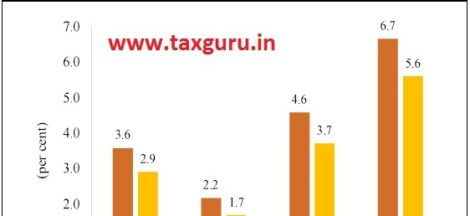MUMBAI: After touching an all-time high of Rs 3.4 trillion last month, the liquidity deficit in the banking system has started to ease. The liquidity deficit declined to Rs 2.4 trillion on Thursday, reflecting a fall of around Rs 1 trillion, according to the Reserve Bank of India data. Experts say that the days of extreme cash squeeze are unlikely to haunt banks again and the deficit in the system is likely to remain in Rs 1.25- 2 trillion range in the next quarter.
The current deficit in systemic daily liquidity levels is due to a combination of seasonal and adhoc factors. Seasonal leakages include demand for tax payments and higher cash in circulation prompted by the Union elections. Ad hoc factors causing a deficit are tight credit-deposit ratios in banks and RBI’s interventions in forex market to maintain a stable currency.
“The seasonal factors will have a temporary impact. Typically, during election years, liquidity deficit usually peaks around mid-February, and starts easing after that. Additionally, less than expected government borrowing in FY25 will also help in easing the deficit,” Debopam Chaudhuri, chief economist of Piramal Group told FE.
“A relapse back to Rs 3 trillion of deficit is highly unlikely, especially on a durable basis, and liquidity deficit levels should ease to less than Rs 1.25 trillion by the first quarter of next financial year,” he added.The banking system liquidity deficit breached Rs 3-trillion mark to hit a 14-year high pushed by lower government spending, outflow towards tax payments and sluggish growth in deposits. According to RBI, the liquidity deficit touched Rs 3.34 trillion on January 24.
“Amid the sustained liquidity pressure in the banking system, short-term money market rates, starting from overnight rates to commercial papers/ certificates of deposit, have remained elevated for long,” said Soumyajit Niyogi, director, Core Analytical Group, India Ratings & Research. “We believe this is not conducive for the financial system as well as economic growth,” he added.
The liquidity deficit will remain but it will not go beyond Rs 3 trillion mark, he added. The RBI has conducted several shorter-term repo auctions to infuse cash into the banking system over the past one month to infuse liquidity in the banking system. All the Variable Rate Repo (VRR) auctions conducted since mid-December have received strong response from cash-starved banks.
The central bank has conducted five VRR auctions of 2-13 days maturity since December 16. The VRR auction, conducted on January 12, received bids worth Rs 3.92 trillion from banks against the notified amount of Rs 1.75 trillion from banks, reflecting the desperation of banks for cash. A repo auction is conducted by the central bank to inject liquidity into the banking system.
Source: The Financial Express



